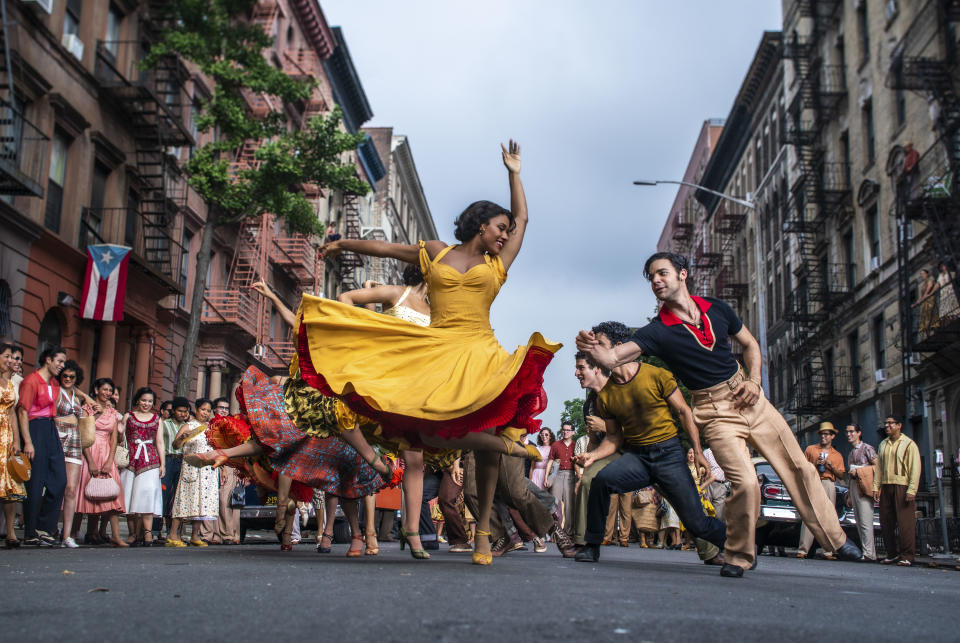Ariana DeBose on the Affirmation of ‘West Side Story’

Ariana DeBose can remember sitting in her grandmother’s living room as a kid watching the 1961 film version of “West Side Story” and being completely taken by the woman in the purple dress, who danced with “reckless abandon” and looked a bit like DeBose.
Fast-forward through the onset of DeBose’s adult career, which would include a role in the original production of “Hamilton” and a Tony nomination for her portrayal of Donna Summer in “Summer: The Donna Summer Musical” and one day she would learn that “West Side Story” was again getting the film treatment.
More from WWD
“I believe so fervently that classics are meant to be reinterpreted because that’s what makes them classic. They’re timeless for a reason. They’re meant to be retold over and over again for different generations in different cultures to make them tangible. Why? Because there are lessons in them that we consistently do not learn and sometimes we have to be reminded of those lessons,” DeBose says. “And I think this particular film goes even further with any version of ‘West Side Story’ that I’ve seen, because it allows you to get to know the social context of what’s going on.”

Niko Tavernise
But she didn’t for a second think there was a part for her in the production, which is directed by Steven Spielberg and written by Tony Kushner.
“I remember thinking, ‘Oh, that’ll be great. Definitely not getting that job.’ And I didn’t think that I actually had a shot in the world at booking any role in this film, especially Anita, because traditionally Anitas are not portrayed by Black women, in my opinion,” she says. “There’s the Debbie Allen of it all onstage, but in general, I didn’t really think that there was space for that.”
DeBose was sitting in a nail salon having her gel soaked off months later when her phone started ringing with the news of her casting.
“I had to ask someone to help me answer it,” she says. “I was like, ‘Hello?’ They were like ‘Hi there. Steven Spielberg for you. He’s on a plane. So, if the call drops I’ll call you back.’ And he asked me if I would be his Anita, which I felt was a real different thing than telling me that I’m going to be Anita. It felt like an invitation as opposed to a ‘This is what I’m going to make you do.’”
Despite the heft of the project, both the iconic nature of the piece and the star power reviving it, DeBose didn’t doubt herself for a second.
“I just felt like I read this script in Tony Kushner’s adaptation and the woman just jumped right at me, and she sat right here and I just knew her. And I think my virtue of being Afro Latina, it’s a completely different lived experience. I’m a Black woman. I walk through the world differently than Rita Moreno is going to walk through the world,” she says. “I think every single job I’ve ever had, so many of my lived experiences prepared me for what I was able to create. It prepared me for the moment. So I didn’t feel I was ill prepared. I just sort of went in and did it. I’ve been trained as a triple threat since I was 15 years old. It’s actually what I am built to do. So to be asked to play the literal greatest role ever written for triple threats, that’s the lottery. And quite frankly, I don’t know where you go from there.”

Niko Tavernise
There have been no shortage of “West Side Stories” in past years — twice on Broadway recently, in 2009 and again short-lived in 2020 — yet DeBose says there is no better time for this film than this very moment.
“The tragedy of ‘West Side Story’ is that these two groups of people actually have more commonalities than they do differences, and if they just sit down and talk, perhaps they could find a solution. But instead there is so much unnecessary violence and unnecessary death and quite frankly, we see that today,” DeBose says. “There’s a reason why the Black Lives Matter movement has occurred. There’s been unnecessary violence and unnecessary death. People who fear change. People who fear the things that make us different, right? ‘Different’ has become equivalent to ‘dangerous’ and that is something we all should fear, in my opinion.”
Best of WWD
Sign up for WWD's Newsletter. For the latest news, follow us on Twitter, Facebook, and Instagram.


